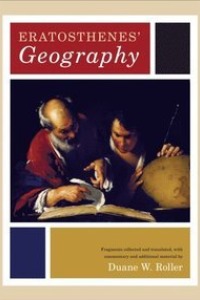
Eratosthenes' Geography
Geographika
Bok av Eratosthenes
This is the first modern edition and first English translation of one of the earliest and most important works in the history of geography, the third-century Geographika of Eratosthenes. In this work, which for the first time described the geography of the entire inhabited world as it was then known, Eratosthenes of Kyrene (ca. 285-205 BC) invented the discipline of geography as we understand it. A polymath who served as librarian at Alexandria and tutor to the future King Ptolemy IV, Eratosthenes created the terminology of geography, probably including the word geographia itself. Building on his previous work, in which he determined the size and shape of the earth, Eratosthenes in the Geographika created a grid of parallels and meridians that linked together every place in the world: for the first time one could figure out the relationship and distance between remote localities, such as northwest Africa and the Caspian Sea. The Geographika also identified some four hundred places, more than ever before, from Thoule (probably Iceland) to Taprobane (Sri Lanka), and from well down the coast of Africa to Central Asia. This is the first collation of the more than 150 fragments of the Geographika in more than a century. Each fragment is accompanied by an English translation, a summary, and commentary. Duane W. Roller provides a rich background, including a history of the text and its reception, a biography of Eratosthenes, and a comprehensive account of ancient Greek geographical thought and of Eratosthenes' pioneering contribution to it. This edition also includes maps that show all of the known places named in the Geographika, appendixes, a bibliography, and indexes.







